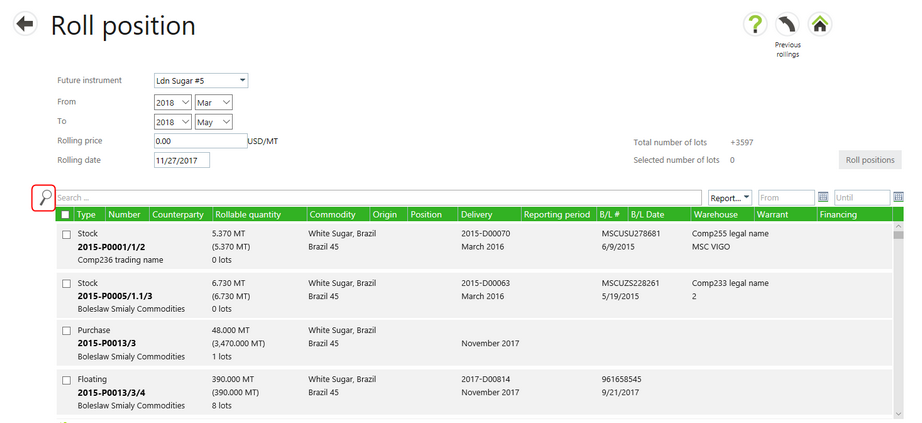| • | On the Roll Position screen, select the required Future instrument from the drop-down box. This will fill in the next futures period by default. |
| • | Edit the From and To rolling dates. |
| • | Enter the rolling price and edit the rolling date if needed. |
| • | Select the Search button to display the position records to be rolled. |

Note that the Total number of lots field is now filled and a list of contracts, stock and floating records appear in the table.
| • | Select the contracts to be rolled by ticking the box next to that row. |
| • | It is also possible to select all of the contracts listed by ticking the box in the green header row. |

| • | Once one or more lots are selected, the Roll positions button becomes active. |

| • | Select the Roll positions button to commit the position rolling for these lots. The Position rolling in progress screen will appear. |

After all items are rolled, the screen will show 100% completion along with the information about the Position rolling and the number of items that have been processed.

Select the back button to return to the Position rolling screen or the Home button to return to the Agiblocks Main menu.
Notes:
| • | Agiblocks only supports rolling when rolling between two positions that have a valuation instruments, otherwise it’s just a position change. |
| • | The position rolling premium does not influence the Mark to Market valuation of a physical asset because it is already taken into account in the Mark to Market valuation of the related future assets. |
| • | Position Rolling can also be done from the Contract Risk tab. When in Edit mode, it is possible to change the futures market as well as the period. Please see Create a single rolling for more details. |
| • | Agiblocks will only roll delivery lines with an open quantity and takes into account the contract quantity tolerance as a threshold. This avoids rolling very small remainders on fully executed contracts. Sometimes a high contract tolerance level may leave a contract with a position unrolled if Agiblocks considers the remaining amount within the contract tolerance level. Lowering the contract tolerance may be needed for Agiblocks to calculate that there is still a significant quantity open to be rolled. |